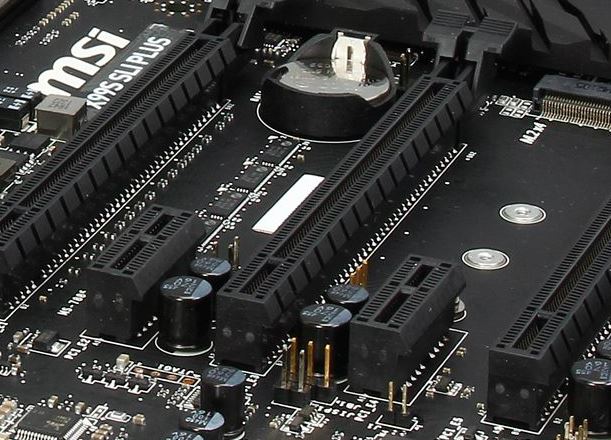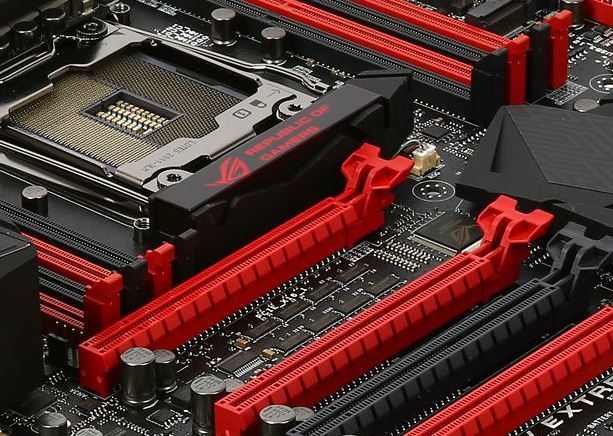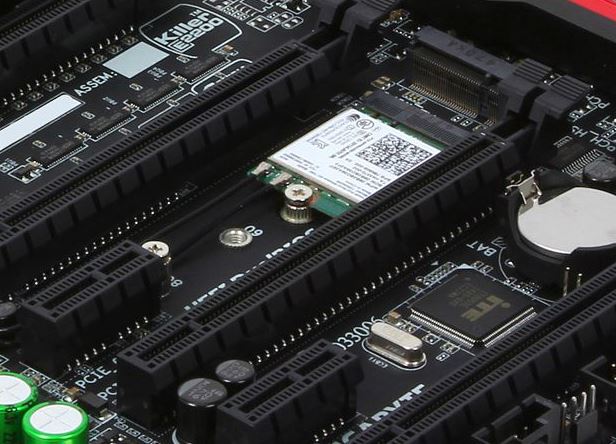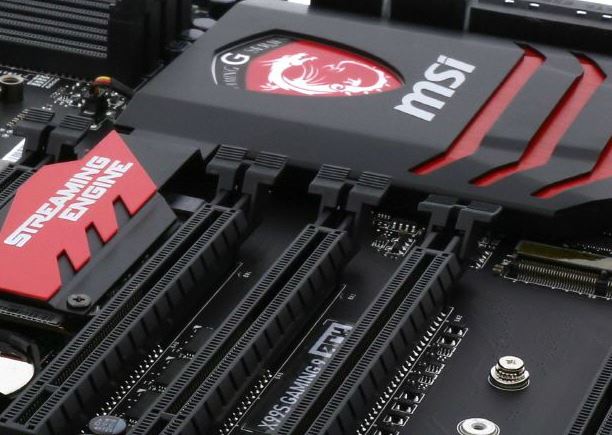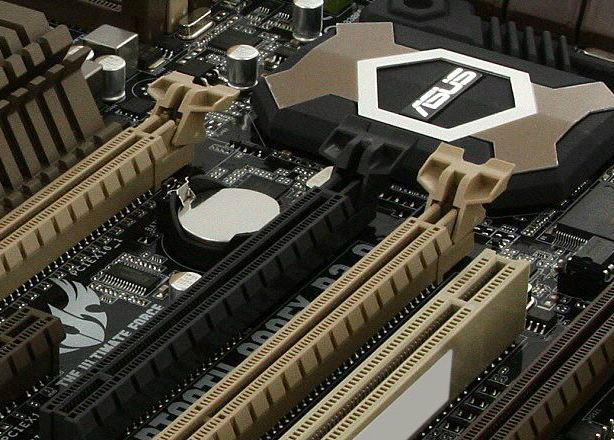
The processing power on your computer comes from the CPU. If you’re a graphics buff, you’ll get your kicks from the video card installed on your system. In the same vein, a good Ethernet jack keeps you constantly connected to the World Wide Web. But it’s your motherboard which puts all the pieces together. Whether you’re buying a new motherboard as part of an upgrade effort or just want to install some new bells and whistles, jumping in without a little background knowledge can lead to a disaster. Unless you know exactly what you want your motherboard to be able to hold and what you’re going to be using it for, shopping for a new motherboard can be an overwhelming and fruitless process.
Making an Informed Decision about Motherboards
When it’s time to invest in a motherboard, there are a variety of products available with varying supported CPUs, chipsets, memory, expansion slots, storage devices, onboard video, onboard LAN ,rear panel ports, internal I/O connectors, and other options. The goal is to get the features you require at the best possible price without paying for what you don’t need. Will you be using your computer for gaming? Do you plan to use it for business purposes? Home entertainment needs? What you plan on using your computer for will determine the specs, features and options which will be most important to you. This buying guide will begin to help you select the motherboard which best suits your needs.
The first thing you need to determine when selecting a motherboard is what features you need. Second, mostly likely, is the cost. The main features you need to consider include:
- form factor (size & shape)
- socket type
- front-side BUS
- chipset
- RAM
- drive connections
- expansion slots
- rear panel ports
The options available when buying a motherboard are vast. Keep reading for a rundown of the types of motherboards available on the market.
Today’s Motherboard Choices
There are essentially two types of motherboards available on the market today. These are integrated and non-integrated boards. Each of these has its own set of benefits and drawbacks, as we will see below. There are also motherboards created specifically for servers—these differ from computer motherboards in their capabilities and features.
Integrated Motherboards
This variant is the one most commonly used today. The word ‘integrated’ implies that all of the components such as the I/O ports, slots for peripheral devices, serial ports, and connectors are all built into the board by the manufacturer. The biggest benefit of this type of board is that it is the cheaper variant. Another advantage is that because everything is integrated into the board itself, a lot of space can often be saved—therefore your computer case can be much smaller and thinner in profile. This may be a key factor in deciding what type of motherboard you need. On the downside, if any one of these components fails, then the entire motherboard may need replacing. This could negate the relatively inexpensive price of the board. However, for smaller-sized and budget computers, these motherboards are ideal.
Integration for peripherals is so advanced that you can find boards with support for graphics card, Fast Ethernet controller integration, USB controllers that support up to a dozen ports, and/or on-board sensors that monitor fan speed, voltage and temperature. Of course, you will also have expansion card slots to add other hardware and peripherals as well. Typically, you might find up to three or four PCIe slots (although they might be a combination of 16x and 1x) and a couple of PCI legacy slots. Every brand and model has its own configuration, but they will invariably support six to eight expansion slots, as mentioned above.
Buying an integrated motherboard is a question of preference and limitations. How much integration you require is based on how much you’re willing to spend, what type of upgrades you’re planning for the future and other such variables. If being able to use expansion slots is your major consideration, then the integrated boards may not be for you. On the other hand, if cost is your tipping point, then these might be the ideal choice. Similarly, if size is the biggest factor, then a fully integrated motherboard might be your best option.
Non-Integrated Motherboards
This is the more basic option of motherboards and one that was the standard before integration came into the picture. With this type of motherboard, nearly all components need to be selected manually. This leaves it up to the user to ultimately decide what they need exactly for there particular PC project.
Because all of the connectors and peripherals must be connected using the expansion slots, there is much less space efficiency when compared to integrated boards. It also makes the boards more expensive in the long run because all of your components have to be purchased separately. The size and cost combine to make this a prohibitive option for many consumers—especially for home and small office desktops.
There is, however, one big advantage with non-integrated motherboards: you won’t have to change the entire board if one of the components fails. With an integrated board, this is a big disadvantage, even though the board itself is fairly inexpensive. With the non-integrated option, you simply need to change the expansion board in question rather than undergo a complete overhaul of the entire motherboard.
This type of board is great for people who will be upgrading their components. For example, with a non-integrated board, graphics cards are easy to pull out and replace with a different one. This, in fact, is the deciding factor behind the naming of the two types of motherboards. Essentially, if the graphics processor is built into the board, then it is considered an integrated board. If the graphics card is removable, then the board would be considered a non-integrated type.
(In actuality, non-integrated cards have some level of integration in them. For example, modern desktop motherboards, even if specified as non-integrated, may have certain controllers or a sound card built in. In such cases they would still be considered non-integrated because the video card isn’t part of the integrated components.)
Server Motherboards
Unlike other motherboards, server motherboards are not meant for computers or laptops. They are meant for servers that store data. When purchasing a server motherboard, your needs will be different. You won’t really need to focus on what types of graphics cards it can hold or how many. Instead, you’ll likely want to focus on processing speeds and the amount of storage the motherboard can handle. You’ll want to focus on the socket platform, which chipset it supports, the LAN controller’s, server management features, and integrated manageability.
Shopping for a server motherboard will be much different than for a PC motherboard. However, some things will remain the same. The ability to upgrade features is essential, for example. You’ll also want to make sure your server motherboard can handle the anticipated load to prevent frequent server crashes.
Motherboard Manufacturers
From Asus to Zotac, there are at least three dozen companies that manufacture motherboards. One major consideration when buying a motherboard is the chipset which you intend to use. Proprietary technology tends to control compatibility, so you will want to verify chipset compatibility with your new motherboard.
There are also several aspects that you need to take into consideration when selecting a motherboard manufacturer. Manufacturers will give specifications for their products, but may not tell you what the best components are unless they also manufacture those components, in which case they might include a list of “recommended” components.
The choice is ultimately yours, but having this information in your possession will let you make educated decisions rather than forcing you to depend on guesswork.
You should also consider that there are only a handful of chipset manufacturers in the world—the most commonly known are Intel, AMD, Nvidia, VIA Tech, and Silicon Integrated Systems. Therefore, your purchasing decision will have to be centered on what type of chipset you have and what type of socket connectivity it offers. There is, unfortunately, no way around this. The good thing about this, however, is that once you find a compatible pair that matches up, you’ll have a powerful processing tool in your hands. The right chipset on the right motherboard will allow you to try out a staggering number of combinations in terms of configuring your system to your specific requirements.
You should also consider upgrade options because you don’t want to be tied in to a product that won’t let you upgrade certain components. Your purchase decision must take this factor into consideration. If you want to be able to upgrade in the future, look for a motherboard that supports this. Most upgrades can be taken care of through expansion slots, but for integrated models, this may not be an option.
The Features and Specifications to Consider
Now that you are aware of the different types of available motherboards, it’s important to understand the specifications and features that various motherboards have to offer. The basic considerations you should keep in mind when shopping for motherboards are form factor, the socket type, the chipset, the RAM, the connections, the slots, the expansion capabilities, and the ports. You may also want to consider what you’ll be able to do in terms of overclocking and other custom tweaks. Depending on your level of expertise with hardware and your specific needs, any of these may be important factors to consider.
Tune in for next week for part two of four in our how to choose a motherboard series
(Continued from Part 1) https://www.newegg.com/insider/how-to-pick-a-motherboard-part-2/

